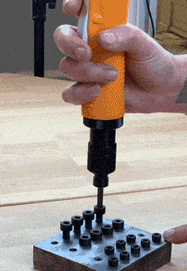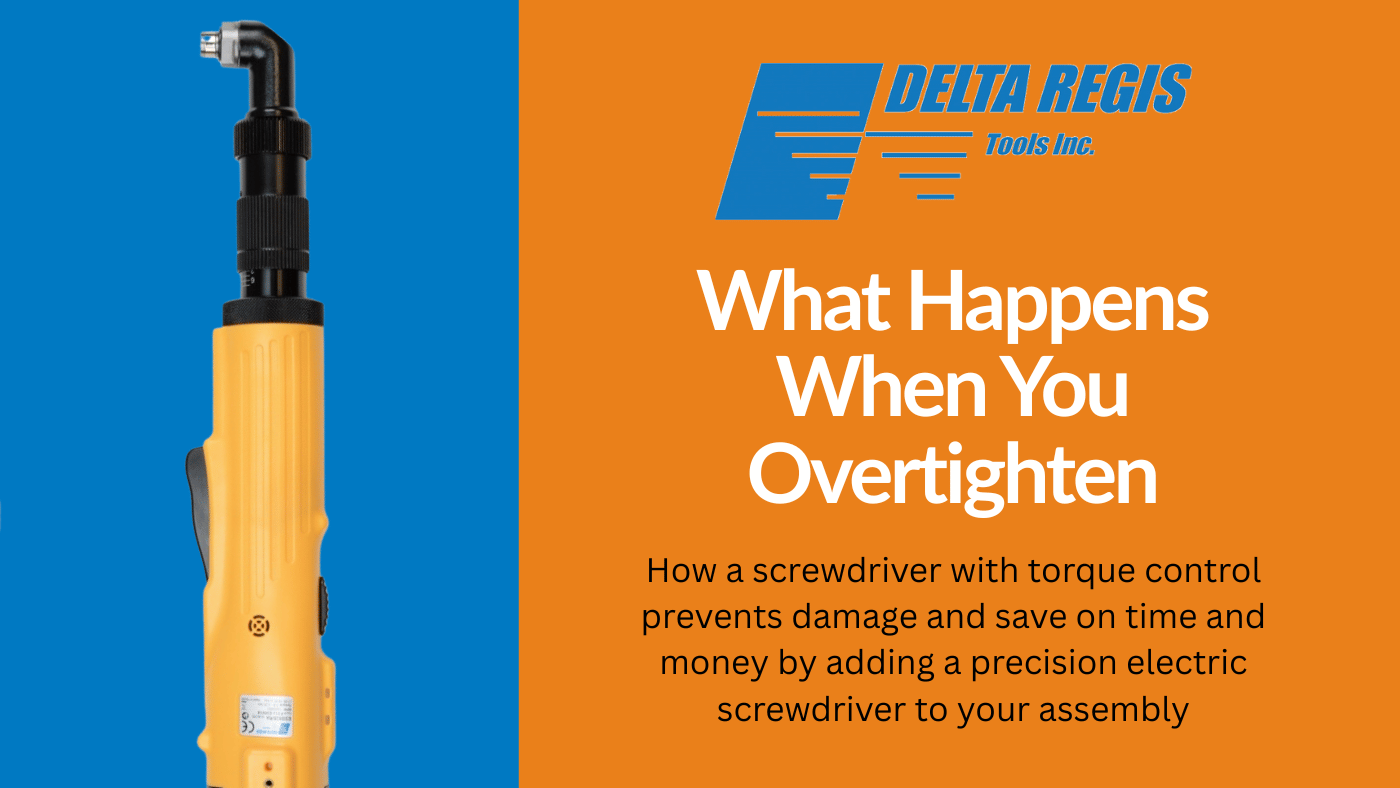Electric Screwdrivers
What Happens When you Overtighten
What Happens When You Overtighten? How a Screwdriver with Torque Control Prevents Damage
In assembly work, overtightening fasteners can be the most common and most costly mistakes made. Whether assembling electronics, automotive parts, medical devices, having to apply too much torque in any of these situations can damage many components, strip threads, and weaken joints. This type of error can lead to expensive reworks, product recalls, or even safety hazards for anyone using the product or even assembling.
In this situation, using a screwdriver with torque control is essential. Once these screwdrivers reach the set torque limit, the tool disengages, applying only what is needed; nothing more and nothing less. It’s a great way to ensure that your company protects your product and your process.

Common Problems Caused by Overtightening
-
Material Damage
The over torquing of screws can lead to many unfortunate consequences. In softer materials like aluminum or plastic this can cause the threads to strip, causing the overall structural integrity to reduce significantly. In housings or enclosures, this can also cause cracking or warping. These are the kind of issues that will be hard to detect until it’s too late.
-
Fastener Weakening
If you aren’t using the proper in-lb torque screwdriver for the job, applying excessive torque can stretch or even break bolts and screws. Once the fastener is compromised, it may not be able to maintain the required load, which may lead to vibrations, loosening, or product failure over time.
-
Increased Operational Risk
Overtightening fasteners will cost more than just broken parts. Risks of failed quality checks and unexpected downtime can begin to add up quickly. If the application requires high-precision for delicate components, then a torque-controlled screwdriver is critical for this operation.
How a Torque-Controlled Screwdriver Works
Torque limiting screwdrivers are the best tools when looking for precision and consistent fastening without exceeding specified torque values. In clutch-based electric models, mechanical shut-off clutch disengages the drive and shuts off the tool when the preset torque value is reached – thus preventing any excess torque applied to the fastener. This prevents further application of torque to the product being assembled, protecting the fastener and the joint.
This feature helps to ensure that consistent torque is delivered across multiple fastening cycles without relying on operator feel. Having this clutch-based electric screwdriver helps manufacturers reduce variability, minimize reworks, and meet compliance requirements in high-volume and high-precision production environments.
Conclusion
By investing in an electric screwdriver with torque control, you raise the success of eliminating assembly errors and reduce long-term costs. Whether choosing a standard model, right angle torque screwdriver, or a digital in-lb torque screwdriver, your assembly line will gain better consistency, safety and product quality.
Need high precision on your assembly line? Explore our lineup of in-lb torque screwdriver and right angle drivers. Engineered for controlled, reliable fastening. Not sure about your application? Get in touch with Delta Regis, and we’ll help you find the best solution for your assembly!
Contact Us!
